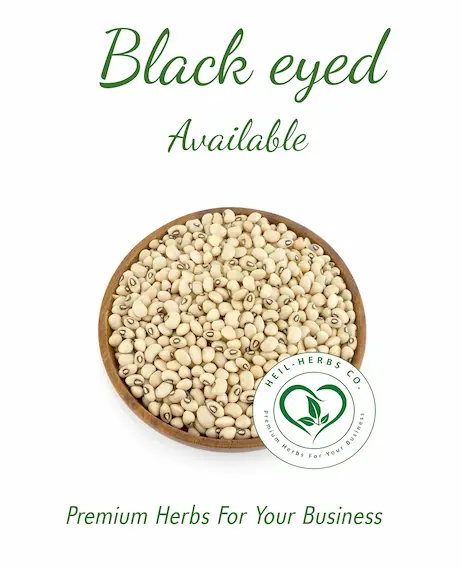Black-eyed beans
Black-eyed Beans
Heil Herbs Co. proudly presents our premium-quality Black-eyed Beans, exported directly from the fertile lands of Egypt. Renowned for their nutritional benefits and versatility, our Black-eyed Beans are an excellent choice for various industries including culinary, health supplements, and food manufacturing.
Product Highlights:
- 100% Natural: Sourced from organic farms without the use of harmful pesticides or fertilizers.
- High Nutritional Value: Rich in protein, fiber, and essential vitamins, making them a healthy addition to any diet.
- Versatile Applications: Ideal for soups, salads, stews, and as a healthy snack.
- Export Quality: Complies with international quality standards for B2B trade.
Specifications:
- Latin Name: Vigna unguiculata
- HS Code: 0713.10.00
- Origin: Egypt
- Packing Options: Available in bulk or customized packaging solutions to meet client specifications.
Shipping:
- Standard Packing: 25 kg bags
- 20 ft Container: Can load up to 12 tons
- 40 ft Container: Can load up to 24 tons
- 40 HC Container: Can load up to 28 tons
Why Choose Heil Herbs Co.?
At Heil Herbs Co., we ensure sustainable farming practices and ethical sourcing. Our Black-eyed Beans are cultivated with care, guaranteeing a pure and high-quality product. We provide flexible packing options and reliable shipping services tailored to the needs of our B2B clients globally.
Applications:
- Culinary: Perfect for a variety of dishes including salads, soups, and side dishes.
- Health Supplements: A great addition to dietary supplements due to their high protein and fiber content.
- Food Manufacturing: Used in various processed foods for their nutritional benefits and flavor.
Contact Us:
For inquiries and bulk orders, please visit Heil Herbs Co. or contact our sales team directly at sales@heil-herbs.com. If you are interested in this product, click here to send us an email.

